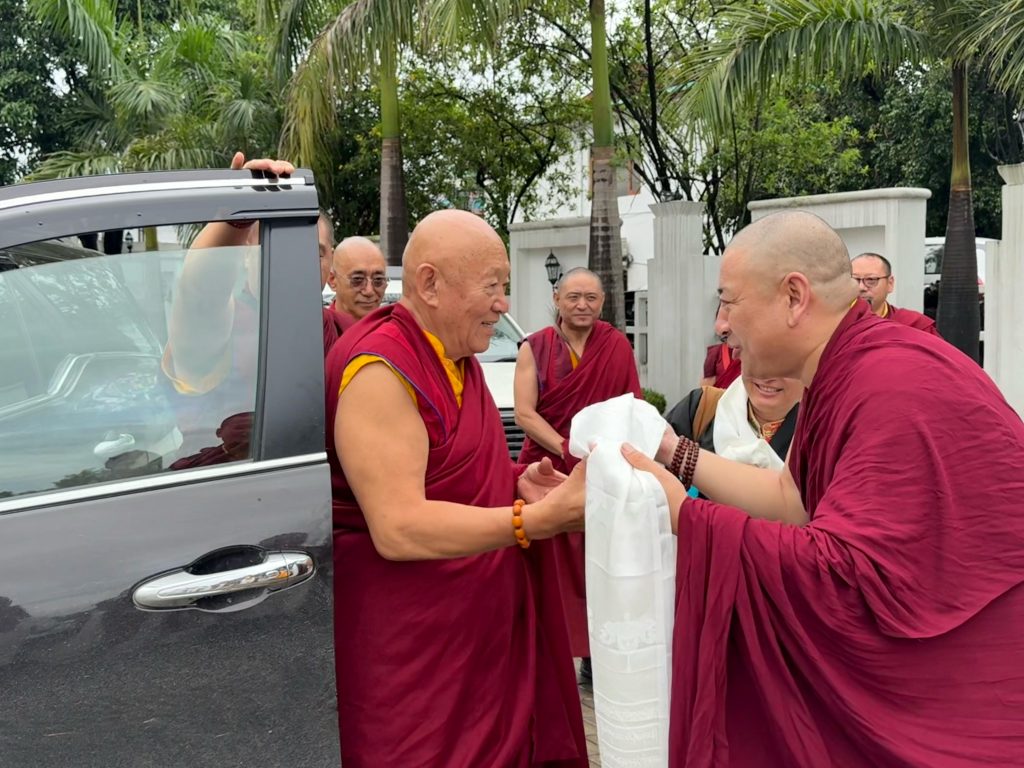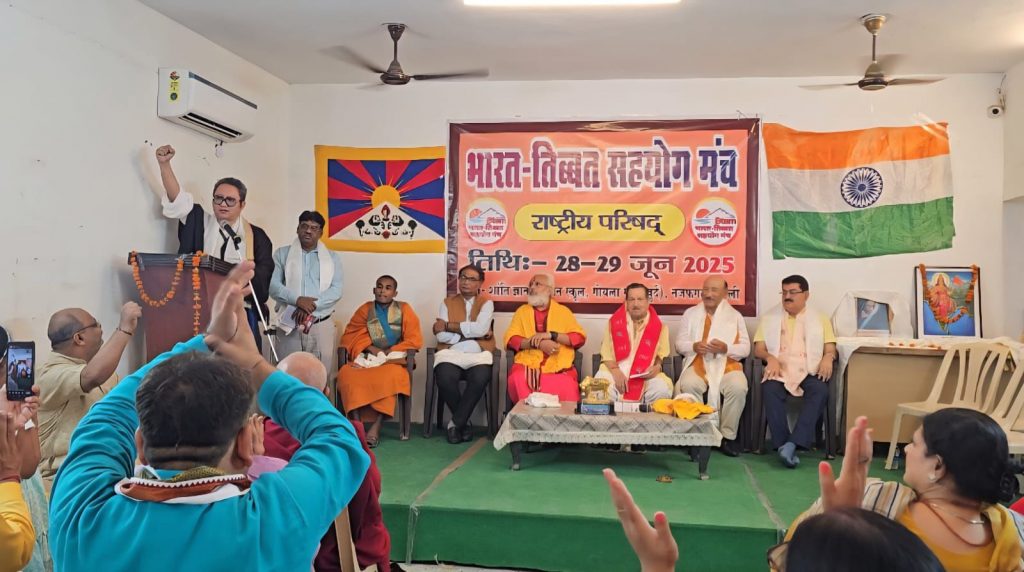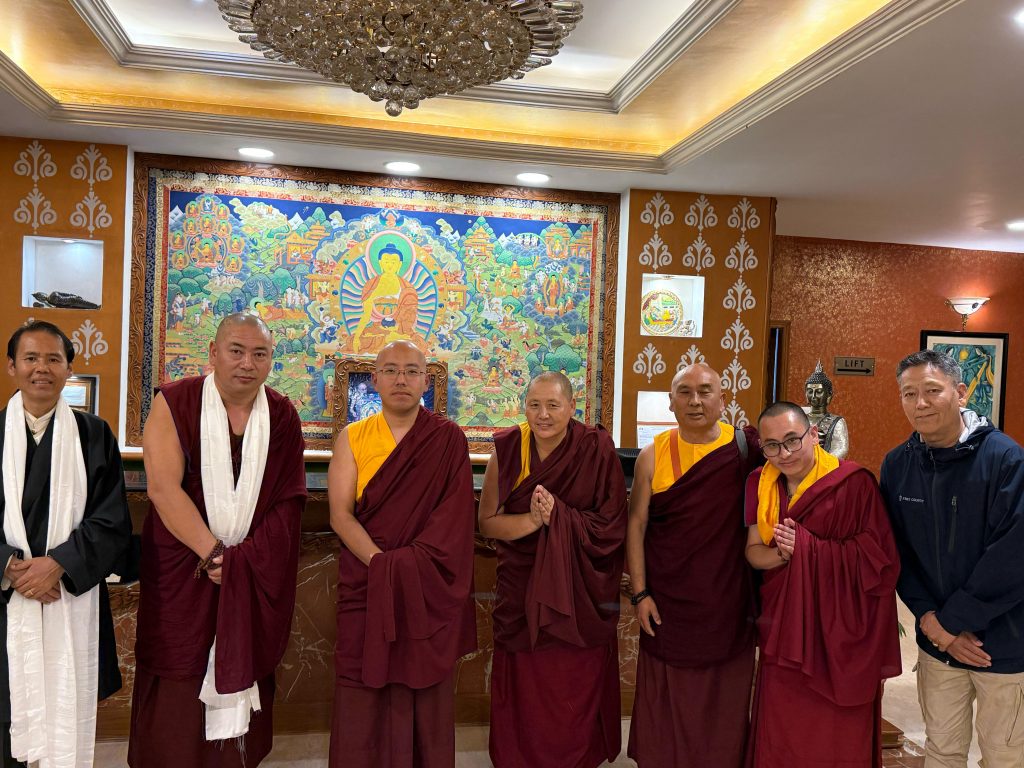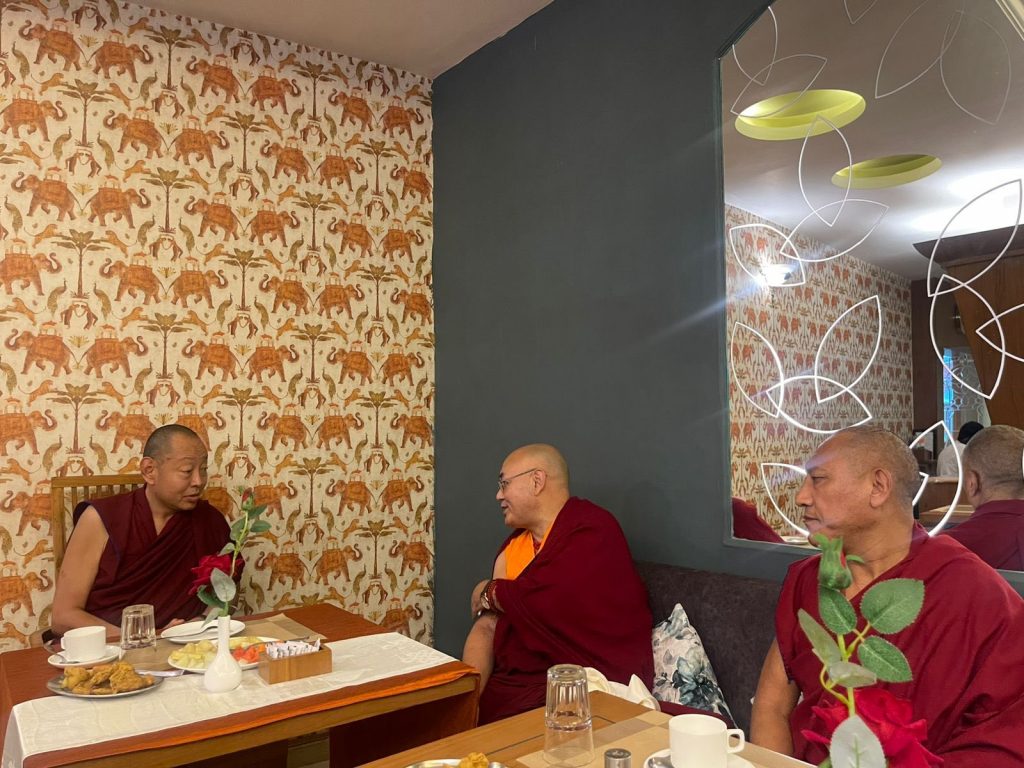
New York: Speaker Khenpo Sonam Tenphel and Deputy Speaker Dolma Tsering Teykhang as special guests along with parliamentarians as guests attended the 88th birthday celebration, according to the Tibetan lunar calendar, organized by the Tibetan Domey Association of New York and New Jersey on 29th June 2022. The celebration was graced by the presence of Kyabje Kirti Rinpoche who was the Chief Guest at the event.
Speaking at the event, the Deputy Speaker reminded everyone present there on how grateful His Holiness the Dalai Lama is to Tibet and Tibetans, he has shouldered the temporal and spiritual responsivity of Tibet at the tender age of 16 during one of the most arduous phases when Chinese communist army had usurped whole of Tibet. In Tibet, His Holiness initiated many democratic reforms which couldn’t be achieved after the illegal occupation of Tibet. His Holiness was forced to leave Tibet and flee to India in exile when the Chinese plotted to bomb the Potala palace, following His Holiness the Dalai Lama thousands of Tibetans came into exile in India.

After coming into exile in India, the first step towards the democratization of Tibetan polity was in 1960 with the formation of the Tibetan Parliament-in-Exile, and he appealed to the United Nations in 1959, 1961, and 1965 respectively. Even though the Tibetan government in exile was seeking independence of Tibet from 1959-79, after realizing that Tibet’s issue cannot be resolved without discussing it with China, His Holiness after discussing with many scholars and experienced leaders proposed the Middle Way Approach (MWA), a mutually beneficial policy, to peacefully resolve the issue of Tibet through dialogue which later became the policy of the Central Tibetan Administration after its approval by Tibetan people.
His Holiness the Dalai Lama, who is the symbol of Tibet, the essence of Tibetans, a source of refugee for this and next life, and the pride of every Tibetan, is the only reason why Tibetans are one of the most successful refugees in the world. Therefore, Tibetans should never forget his kindness and stay grateful to him eternally. And the best way to offer our gratitude is to study the teachings of His Holiness and to head straight toward the path shown by him. NGOs should cooperate with the Central Tibetan Administration to resolve Tibet’s issue, even if their political stands don’t parallel with the CTA’s official stand which seeks genuine autonomy through the Middle Way Approach (MWA).

Thereafter, Khenpo Sonam Tenphel, the Speaker of the Tibetan Parliament-in-Exile, spoke on the outstanding accomplishments of His Holiness the great 14th Dalai Lama explaining his vast invaluable contribution to religion, politics, and society. His Holiness categorizes Buddhism into three types that are the Buddhism of religion, the Buddhism of philosophy, and the Buddhism of science. In addition to piquing people’s curiosity, the Buddhism of science which goes on par with modern science contradicted the old false narrative proving that Tibetan Buddhism is not Lamaism, but rather based on reasoning and logic. His Holiness the Dalai Lama has encouraged people to study, investigate, and understand Buddhism, further producing Geshe-ma, the highest Buddhist academic degree for nuns, in exile. Moreover, due to the sheer blessing of His Holiness and his practical scientific approach, Buddhism and specifically Tibetan Buddhism has reached an important milestone in today’s global arena.

After the Chinese communist party’s illegal occupation of Tibet in 1949 when Tibet was politically most vulnerable His Holiness took the responsibility of Tibet at the mere age of 16 in 1950. After assuming the leadership, he visited China in 1954 and India in 1956 and met many leaders, and after returning to Tibet he formed a reform committee to bring necessary changes to the political setup of Tibet. However, in 1959 when his life was at stake His Holiness was left with no options but to leave Tibet and come to exile in India. In 1960 at Bodhgaya in India, Tibetans of all the three provinces and religious schools offered a long-life prayer to His Holiness the 14th Dalai Lama and vowed to stay united like a strong metallic bonded ball under the leadership of His Holiness the 14th Dalai Lama, and promised to be of service to the Tibetan cause.
In response, His Holiness advised Tibetans to set up a democratically elected body comprising three representatives each from the three traditional provinces and one each from the four schools of Tibetan Buddhism. 13 representatives were termed ‘Deputies’ and designated as the ‘Commission of Tibetan People’ Deputies’ (CTPD) which is now called ‘Tibetan Parliament-in-Exile’, took their oath on 2 September 1960, this historic date is now celebrated as ‘Tibetan Democracy Day’. The Tibetan democratic polity has seen three phases of changes from 1960 to 1991, 1991 to 2001, and 2001 to 2022 respectively, with the adoption of the Charter of Tibetans in exile in 1991, the first-ever election of the Kalon Tripa in 2001, and the devolvement of His Holiness’s political authority to the people’s elected Sikyong in 2011.
Speaking on the urgent situation inside Tibet, the Speaker advised Tibetans to cooperate with the elected leaders of the Central Tibetan Administration and work with a collective effort from all the Tibetans to resolve the issue of Tibet. Thereafter, Chief Guest Kyabje Kirti Rinpoche was presented with an award to recognize his contribution to the preservation and protection of the Tibetan language and culture as per the aspiration of His Holiness the Dalai Lama.





